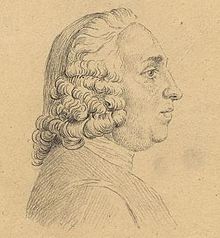Loading AI tools
United Kingdom legislation From Wikipedia, the free encyclopedia
Henry Somerset-Scudamore, 3rd Duke of Beaufort (23 March 1707 – 26 February 1745), born Lord Henry Somerset, was an English nobleman and peer who supported Jacobitism.
The Duke of Beaufort | |
|---|---|
 | |
| Born | Lord Henry Somerset 23 March 1707 |
| Died | 26 February 1745 (aged 37) |
| Noble family | Beaufort |
| Spouse(s) | |
| Issue | Margaret Burr (illegitimate) |
| Father | Henry Somerset, 2nd Duke of Beaufort |
| Mother | Rachel Noel |
He was the elder son of Henry Somerset, 2nd Duke of Beaufort and his second wife, Rachel Noel. As his father's eldest son and heir to his father's title he was known as (styled) Marquess of Worcester, a courtesy title. On his father's death on 24 April 1714, he succeeded him and became 3rd Duke of Beaufort.
At the age of 19, Beaufort commissioned the construction of what would later become known as the Badminton Chest or Badminton Cabinet, an ornate set of drawers made in Florence. The chest was sold in 2004 to Hans-Adam II, Prince of Liechtenstein for £19 million, making it the most expensive piece of furniture in the world.[1] It is on display in the Palais Liechtenstein in Vienna, Austria.
The Duke was one of several founding governors of Britain's first institution for abandoned children, the Foundling Hospital, and his name is listed in its royal charter received from George II in October 1739.
In 1743, he was one of several leading English Tories who communicated with the French government through Francis Sempill in order to elicit French support for an invasion to restore the Stuart line.
After his death, the 3rd Duke of Beaufort was buried at St Michael and All Angels Church, Badminton. His memorial was sculpted by John Michael Rysbrack in 1754.[2]
Because he had no legitimate children, his titles and estates were inherited by his younger brother, Charles Noel Somerset.
| Duke and Duchess of Beaufort's Name and Lord Scudamore's Estate Act 1729 | |
|---|---|
| Act of Parliament | |
 | |
| Long title | An Act for obliging Henry Duke of Beaufort. and Frances Dutchess of Beaufort and her Children, to take the additional Surname, and bear the Arms, of Scudamore, pursuant to a Settlement made by James late Lord Scudamore in the Kingdom of Ireland; and for vesting in the said Duke, in Fee, the Manors of Wickball and Ditton Camois, and Lands in the County of Cambridge, late the Estate of the said Lord Scudamore, in Lieu of the Portion provided by him for his Daughter the said Dutchess; and for other Purposes therein mentioned. |
| Citation | 3 Geo. 2. c. 10 |
| Dates | |
| Royal assent | 15 May 1730 |
On 28 June 1729 Beaufort married Frances Scudamore, the only daughter and heir of James Scudamore, 3rd Viscount Scudamore, and took his wife's name by a private Act of Parliament (3 Geo. 2. c. 10) later the same year.[3]
In 1742 Beaufort filed for divorce over Frances's adulterous relationship with William Talbot, who later became Earl Talbot. Frances countersued, saying the Duke was impotent; in March 1743, he demonstrated before court-appointed examiners that he was physically able to have an erection. The divorce was granted, and he sued Talbot for damages.[4][5] Frances later remarried, to Charles FitzRoy-Scudamore.
Beaufort had one illegitimate daughter, Margaret Burr, who married the painter Thomas Gainsborough and had issue.
Seamless Wikipedia browsing. On steroids.
Every time you click a link to Wikipedia, Wiktionary or Wikiquote in your browser's search results, it will show the modern Wikiwand interface.
Wikiwand extension is a five stars, simple, with minimum permission required to keep your browsing private, safe and transparent.